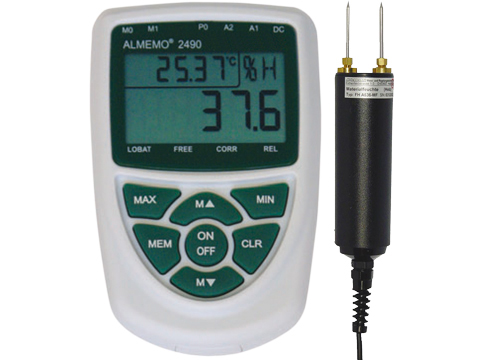We supply a variety of types of moisture meters such as: pinless, wood, soil, Grain.
Uses of a Moisture Meter -
Moisture measurement is required on a wide range of topics: Raw materials in the field of food, plastics, soil moisture in agriculture, moisture in trees, moisture in walls and floors as a result of water damage Measurement in the paper, measurement in legumes, seeds and seeds and more.
How does a moisture meter work?
A moisture meter is a smart portable device that allows moisture to be measured on all types of surfaces.
In many industries humidity meters are used ranging from air conditioning systems through plumbing, storage rooms, manufacturing spaces, growing spaces and ending up in laboratories with hundreds of computers.
Each application in the industry has a different set of requirements from the humidity measuring instruments, such as: the required measuring range, condensate recovery capacity, extreme temperature, and pressure conditions, different levels of accuracy and more.
What is moisture?
Moisture is actually the degree of moisture that is in the air, on the surface, or in a gas compound. The moisture is excellent in percent, and it can be measured as absolute moisture.
The relative moisture (RH) on the surface or in the air depends on the temperature. For example, in a room with an RH of 50% and a temperature of 25 degrees Celsius, raising the room temperature to 30 degrees will reduce the RH to 37%, even though the water vapor pressure remains the same.
High-quality moisture meter
The performance of a humidity meter is a critical component in the ability to measure humidity.
When choosing a moisture meter, check these characteristics:
-Wide measurement range: Choosing a humidity meter depends on the application of a full range that dominates all Moisture conditions.Most high-quality meters make sure to cover the entire possible spectrum (0-100% RH).
-Response time - The response time of the sensor in the device is another component that determines its quality.
-Good level of accuracy - A good level of accuracy creates maximum certainty during the measurement. To create a better level of accuracy, it is advisable to calibrate the device occasionally
